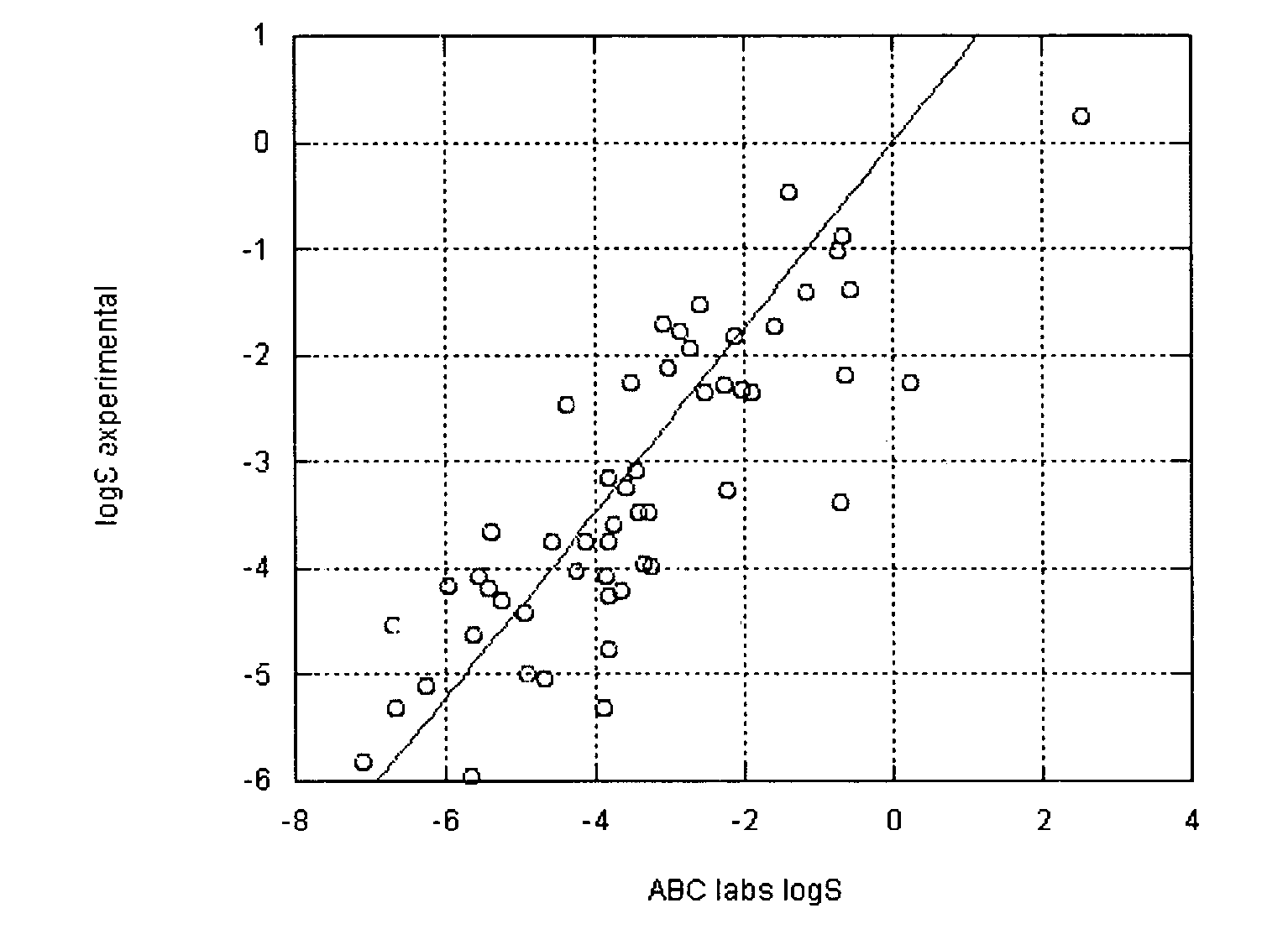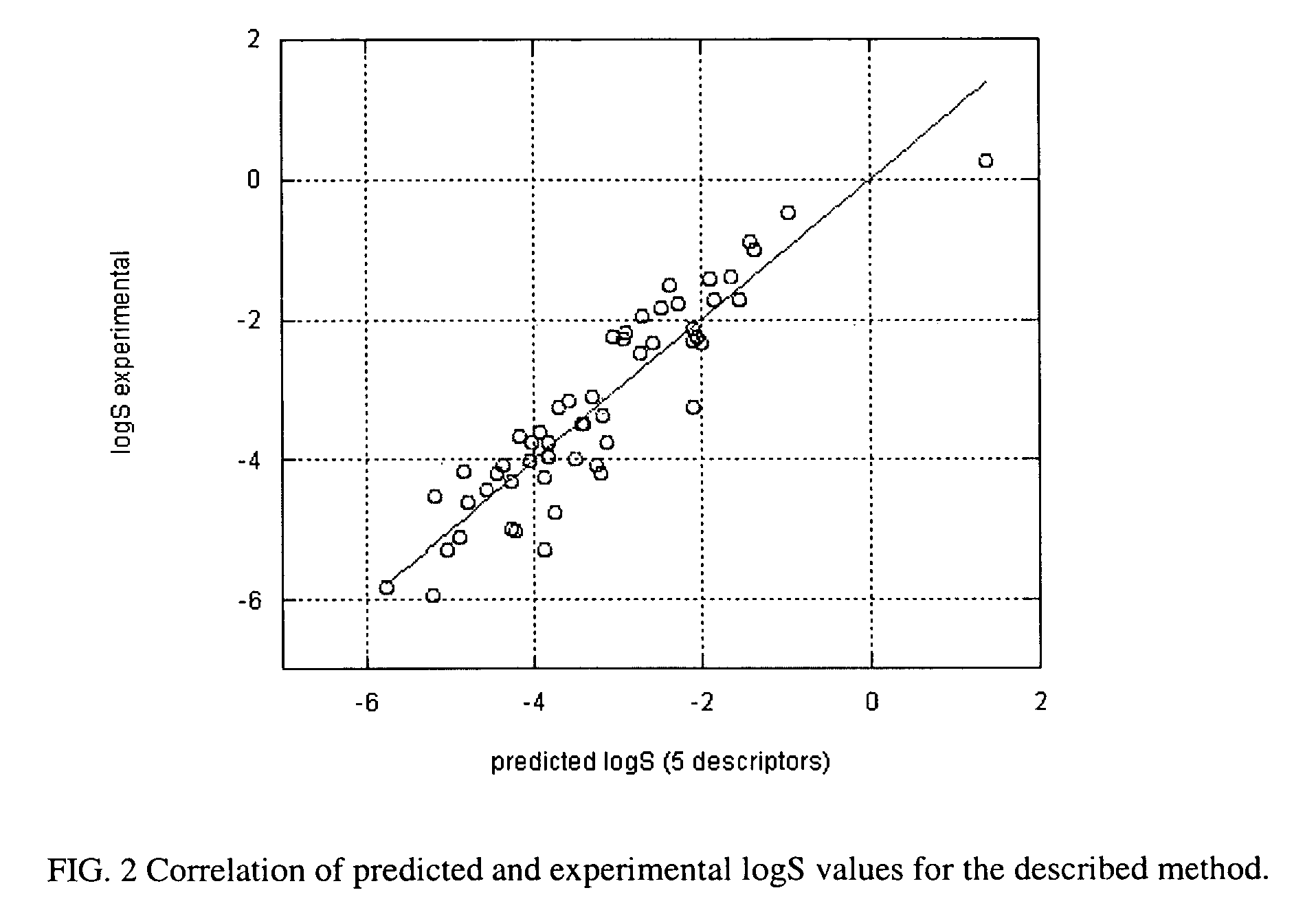Method of prediction of solubility of chemical compounds
a solubility and chemical compound technology, applied in the field of physical chemistry computation methods, can solve the problems of difficult estimation, difficulty in most projects, and difficulty in predicting solubility of drug-like compounds, and achieve the effect of accurately predicting solubility and accurately characterizing cohesive interactions
- Summary
- Abstract
- Description
- Claims
- Application Information
AI Technical Summary
Benefits of technology
Problems solved by technology
Method used
Image
Examples
Embodiment Construction
[0049]Embodiments of the invention will now be described with reference to the accompanying Figures, wherein like numerals refer to like elements throughout. The terminology used in the description presented herein is not intended to be interpreted in any limited or restrictive manner, simply because it is being utilized in conjunction with a detailed description of certain specific embodiments of the invention. Furthermore, embodiments of the invention may include several novel features, no single one of which is solely responsible for its desirable attributes or which is essential to practicing the inventions herein described.
[0050]Monte Carlo (MC) simulations in torsional angle space (Abagyan R, Totrov M., J Mol Biol. 1994 Jan. 21; 235(3):983–1002. Biased probability Monte Carlo conformational searches and electrostatic calculations for peptides and proteins) are used to build a model of the solid phase of compounds. In each simulation four copies of a molecule are assembled into...
PUM
 Login to View More
Login to View More Abstract
Description
Claims
Application Information
 Login to View More
Login to View More - R&D
- Intellectual Property
- Life Sciences
- Materials
- Tech Scout
- Unparalleled Data Quality
- Higher Quality Content
- 60% Fewer Hallucinations
Browse by: Latest US Patents, China's latest patents, Technical Efficacy Thesaurus, Application Domain, Technology Topic, Popular Technical Reports.
© 2025 PatSnap. All rights reserved.Legal|Privacy policy|Modern Slavery Act Transparency Statement|Sitemap|About US| Contact US: help@patsnap.com



